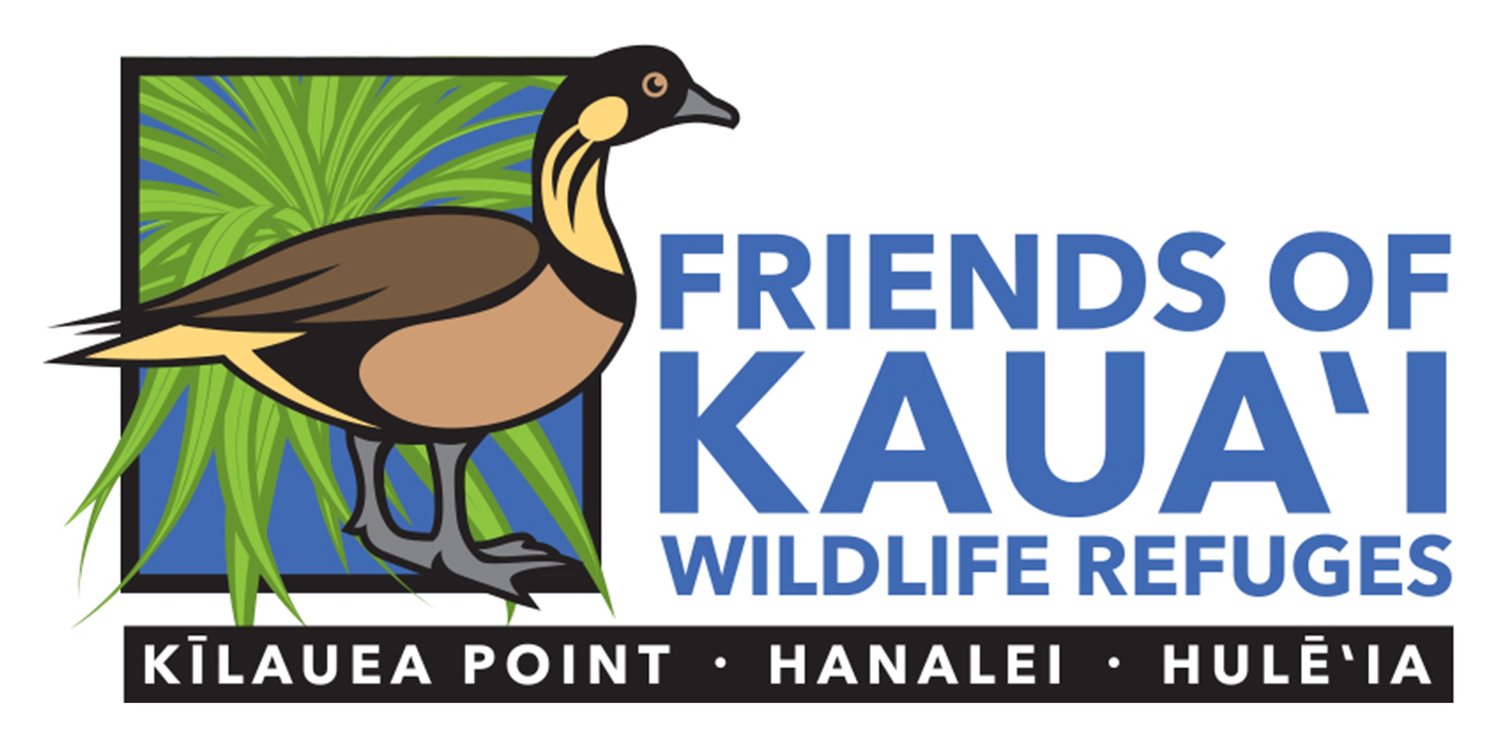Wildlife Spotlight: ‘iwa
The ‘iwa (great frigatebird) is one of the easiest seabirds to identify at Kīlauea Point NWR because of its distinctive appearance. With its large black body, seven-foot wingspan, hooked beak and forked tail, it is the largest bird at Kīlauea Point NWR and is not easily missed.
The Hawaiian name ‘iwa means “thief” and visitors to Kīlauea Point NWR frequently witness this behavior, which biologists call kleptoparasitism. Here at Kīlauea Point NWR, the ‘ā, or red-footed boobies, take the brunt of these attacks. The agile ‘iwa chases down the ‘ā, harassing it until the poor flustered bird regurgitates its meal. The ‘iwa then swoops down, catching and eating the prize mid-air before the stolen goods hit the water.
Kleptoparasitism is an opportunistic behavior and is not the primary feeding strategy for ‘iwa. Because their feathers are not as water-proof as other seabirds, they generally gather food by skimming fish and squid from the ocean surface, or even from the air when fish leap out of the water. However, due to the constant presence of the ‘ā colony at Kīlauea Point NWR, kleptoparasitism is a common experience here, particularly among adolescent ‘iwa.
Across much of the Hawaiian Islands, ‘iwa are often only seen coming near land when a storm at sea is approaching. However, we are fortunate to be able to enjoy daily views of these majestic birds at Kīlauea Point NWR. Despite their consistent presence here, ‘iwa are not known to nest on Kaua‘i nor any of the main Hawaiian Islands. Nesting in Hawaiʻi has only been verified on the more remote, uninhabited islands and atolls to the northwest of our main Hawaiian Islands. They do, however, roost on the Refuge in trees and shrubs along the crater wall below Nihokū.
The iconic image of an ‘iwa is the all-black male with its crimson red throat pouch, or gular sac, inflated like a balloon – something it only does during courtship. However, it is easy to distinguish between the sexes. Males are all black and the females are black with a white throat and chest. Juveniles and females look similar, but the juveniles have white heads and underparts, with some rust coloring mixed in.
Another great place to see ‘iwa is at Kāhili Beach, also known as Rock Quarries, which is at the eastern edge of Kīlauea Point NWR. Here, you can see them up close as they dip down to skim fresh water from the stream.
So, grab your binoculars and come see these winged wonders of the seabird world gracefully gliding up and down the channels of air currents at Kīlauea Point NWR, many times not even needing to make a single wing beat for minutes on end. And, if you’re lucky, you might also catch a little ‘iwa thieving in action!
Photo Credit: Hob Osterland


